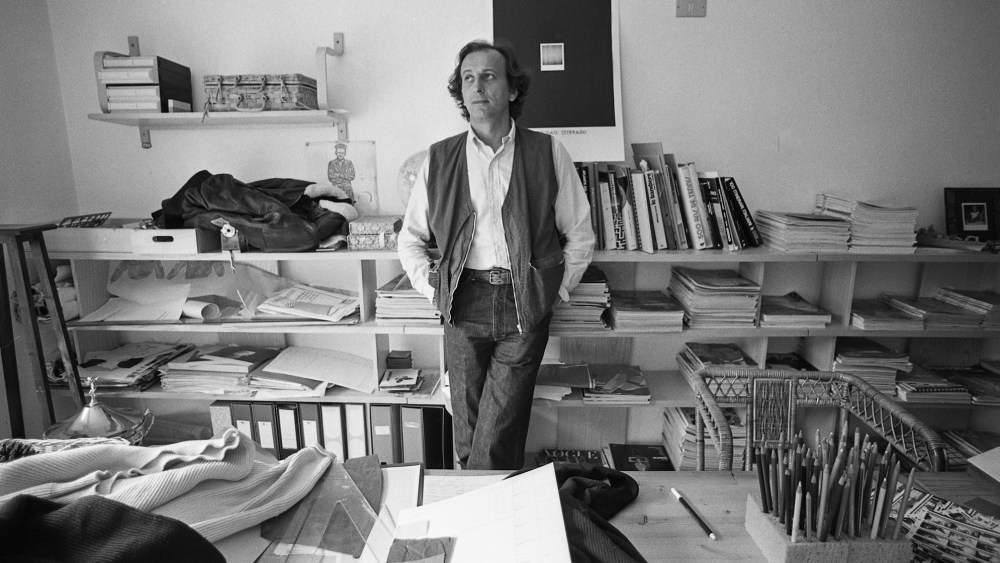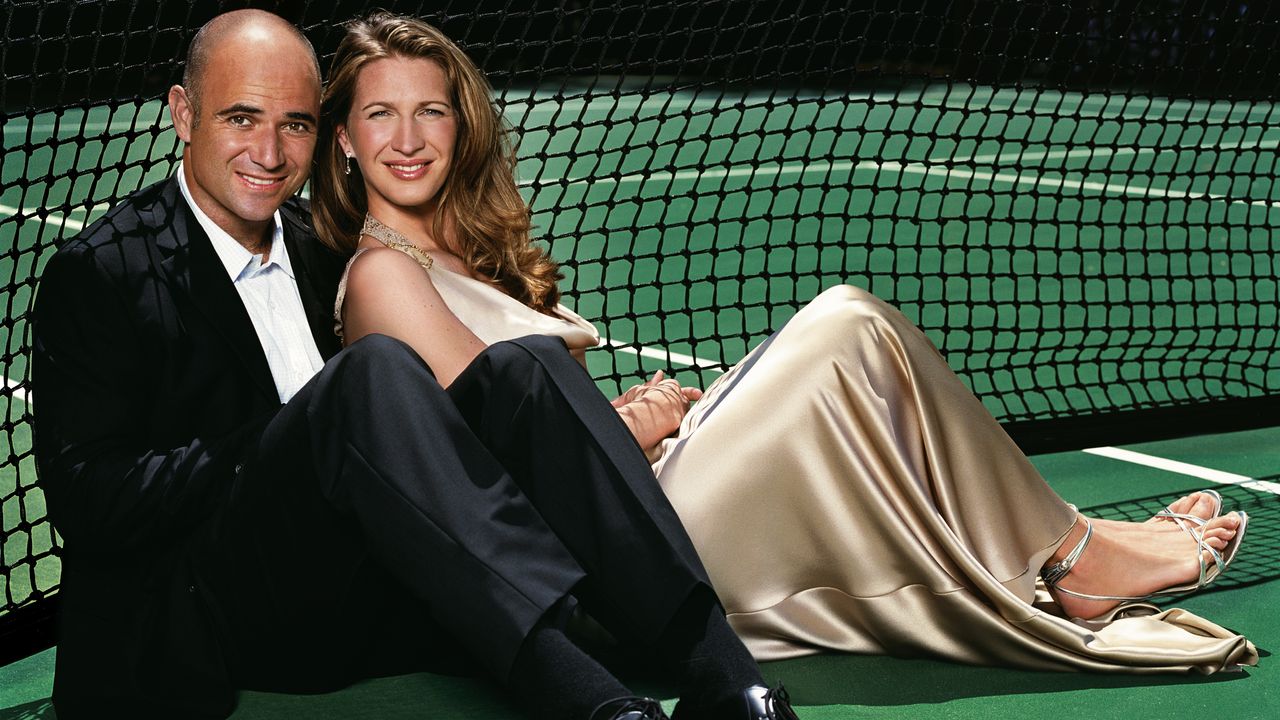
BOLOGNA, Italy — Massimo Osti’s legacy is larger than life.
The maverick designer and fashion entrepreneur, who died in 2005 of lung cancer, has been at the forefront of innovation, pioneering the garment-dyeing, screen printing and decoupage techniques, inventing brushed wool and rubber flax and helping to define the notion of Italian sportswear — filled with military and utilitarian references — as it’s known today.
His work ethic was ironbound, his creativity often chaotic, his studio on Bologna’s Via Gaibola a wunderkammer of sorts where the textile-nerd creative masterminded more brands than arguably any other designer.
These included in 1967, Chomp Chomp…, a line of graphic T-shirts hinged on pop culture and Osti’s obsession for comic strips; Chester Perry, founded in 1971 as the progenitor to C.P. Company, into which it was renamed in 1978; Boneville in 1981; Left Hand in 1993, which led him to develop textiles resistant to nuclear radiations, and Massimo Osti Production in 1995, among others. All along the way, the designer has been fueled by an engineer-like mindset and methods, always on the hunt for technical feats and newness.
Summing up his heritage and impact isn’t easy, but a new exhibition — titled “Ideas From Massimo Osti. From Bologna, Beyond Fashion” — has bowed at Palazzo Pepoli in Bologna and runs through Sept. 28, aiming to spotlight the unknown facets of the designer’s creativity and career.
“He was a communicator more than a designer,” said Lorenzo Osti, his son and current president of C.P. Company and Massimo Osti Studio, walking WWD through the exhibit. “He never looked back, never leveraged his successes from the past.”

Inside the “Ideas From Massimo Osti. From Bologna, Beyond Fashion” exhibit.
Courtesy of Massimo Osti Archive
The two-room exhibiting space is filled with memorabilia, garments and a reproduction of his studio. Lorenzo Osti is a passionate storyteller of his father’s legacy, sharing many anecdotes that shed an interesting light on the designer’s eclectic talent, “whose work method was steeped in layers,” as his son put it.
“I love the order in disorder, the logic into chaos,” reads a Massimo Osti note on paper displayed in the exhibition.
The exhibition is flanked by a 430-page book of the same title.
“It took us four years of research to compile the book,” Lorenzo Osti said. “Nobody in the family was involved in his business or work life. He left everything as it was when he died, as if he were just taking a lunch break.”
Born in 1944 in Baricella, in the greater Bologna metropolitan area, Massimo Osti quit his education after high school to become a salesman for Pirelli.
After attending the Cedis evening school in commercial graphic design, he ventured on a new career by opening the CD2 advertising agency and working with women’s knitwear company Anna Gobbi, for which he created graphic T-shirts with silhouetted swimmers and trompe l’oeil knits through to corporate parties’ invites.

Inside the “Ideas From Massimo Osti. From Bologna, Beyond Fashion” exhibit.
Agnese Bedini/Courtesy of Massimo Osti Archive
He never considered himself a fashion designer, Lorenzo Osti explained, nor did he have any formal education in fashion, but managed to develop a peculiar design method, for example, photocopying full-sized elements from military or workwear jackets found in books and assembling them in paper collages — Frankenstein-like — to prototype new garments.
A Bauhaus-inspired creative approach informed his career, in that function always led his design ethos over form, taking cues from vintage military and utilitarian gear, which he collected in large quantities believed to tally about 35,000 items, according to Lorenzo Osti.
The designer’s most recognized legacy may be in fashion items. These include C.P. Company’s Explorer jacket and Goggle jacket — the latter introduced in 1988, mirroring a Japanese military protective hood with built-in, gas mask-inspired lenses on the hood and left sleeve to read watches and later used by drivers in the Mille Miglia car race. Or the Stone Island Zeltbahn Cape, its shape inspired by military outerwear that doubled up as a tent, crafted from the dual-color, resin-coated cotton canvas Tela Stella, which is known for its washed effect and was originally intended for truck tarps.
But his creative output has always been larger than textile innovation and fashion design.
Communication; advertising; furniture, with a line of Alvar Aalto-inspired designs; industrial design, with a prototype for the Vespa 50 scooter and for an electric car named Boxel P488 developed in tandem with Paolo Pasquini, as well as new business models with innovative store concepts are all part of his legacy.
For one, he envisioned Made in China, a new brand hinged on a streamlined offering of 12 tops and knits per season designed by the Italian Osti and manufactured in China from cotton, wool, cashmere and wool “with an extraordinary value for many propositions,” archival documents read.
Similarly, the ethical OM Project line from 1997 and 1998 was forward-looking. It centered on providing points of sale with a computer station for clients to customize their own jackets that would be produced on-demand, thus reducing distribution costs and generating higher margins to be partially earmarked to charity projects for underprivileged children.

The reproduction of Massimo Osti’s studio at the “Ideas from Massimo Osti. From Bologna, Beyond Fashion” exhibit.
Agnese Bedini/Courtesy of Massimo Osti Archive
The exhibition is an appetizer, meant to create a hunger for more knowledge, which can be satisfied by roaming the Massimo Osti Archive, established by the Osti family in 2006 and led by Lorenzo’s sister, Agata.
Housed inside a 3,229-square-foot, medieval warehouse in downtown Bologna, it is filled with more than 5,000 garments, 1,200 accessories, 60,000 fabric samples and an extended library of magazines, books, prints and other paraphernalia.
Stacked in corners, garment racks and display tables, they are a meticulous but non-comprehensive overview of Osti’s body of work.
Still inspirational, they are used daily by the team behind C.P. Company and the Massimo Osti Studio brand, the latter a spin-off of the former intended as a playground for experimentation hinged on the forward-looking design agenda of the maverick designer.
The rest of the archive was sold by Massimo Osti himself just before his death to David Chu, the American designer with Taiwanese roots who founded men’s outerwear and sportswear company Nautica. The latter donated the 36,000-piece collection to the China Design Museum inside the Xiangshan Campus of the China Academy of Art in Hangzhou. The cultural institution has since mounted a permanent exhibition, titled “The Collection of Massimo Osti Menswear.”
In 2021, C.P. Company marked its 50th anniversary with an exhibition titled “Cinquanta: A Retrospective on 50 Years of Sportswear Innovation by C.P. Company” and the book “C.P. Company 971 – 021: An Informal History of Italian Sportswear,” with images by Neil Bedford, in addition to other activations.
Both were interesting retrospective views on one of the two brands that best encapsulate Osti’s legacy, but Bologna’s archives spark a bigger narrative, for example on the role played by the Italian second-tier city in shaping his work, which was the result of cross-pollination and interactions with plenty of multidiscipline creatives gravitating around Bologna.
To this end, a new book in the works with publishing house Corraini is intended to spotlight how the dialogue between Osti and other prominent figures from Italy’s and the city’s cultural milieu between the ‘70s and early 2000s, including singer Lucio Dalla and cartoonist Andrea Pazienza, shaped his vision.
“I believe that brands work when they manage to grasp the zeitgeist and societal change and translate its pulse [into fashion],” Lorenzo Osti opined.
This view — which his father shared, he said — in part explains the appeal of Massimo Osti’s brands and creations to a broader and international audience. These included the British so-called “casual” subculture of soccer fans, rooted in the terraces of stadiums across the U.K., particularly Liverpool, Manchester and Glasgow, who helped propel C.P. Company’s and, to some extent, Stone Island’s global fame across the ‘80s and ‘90s.
In keeping with its British ties, C.P. Company on Monday is unveiling a capsule collection with retailer End to mark the latter’s 20th anniversary. Called “Corner Shop,” the lineup draws inspiration from the independently run convenience store typically located on residential street corners, with three key outerwear styles and shoulder bag crafted from the new Kan-D fabric, a monofilament nylon with a transparent, luminous, cellophane-like finish.

Inside the “Ideas from Massimo Osti. From Bologna, Beyond Fashion” exhibit.
Agnese Bedini/Courtesy of Massimo Osti Archive
Massimo Osti left C.P. Company and Stone Island in 1994 and 1995, respectively.
The former has undergone many ownership changes since, until it was acquired in 2015 by the Chinese Tristate Holdings Ltd., helmed by chairman and chief executive officer Peter Wang.
The latter, owned by Carlo Rivetti and his family since the ‘80s, was sold to Moncler in 2020, which took full control a few months later by acquiring the remaining 30 percent stake in the brand owned by the Singapore-based Temasek.
#C.P #Company #Stone #Island #Founder #Massimo #Osti #Celebrated #Exhibit








